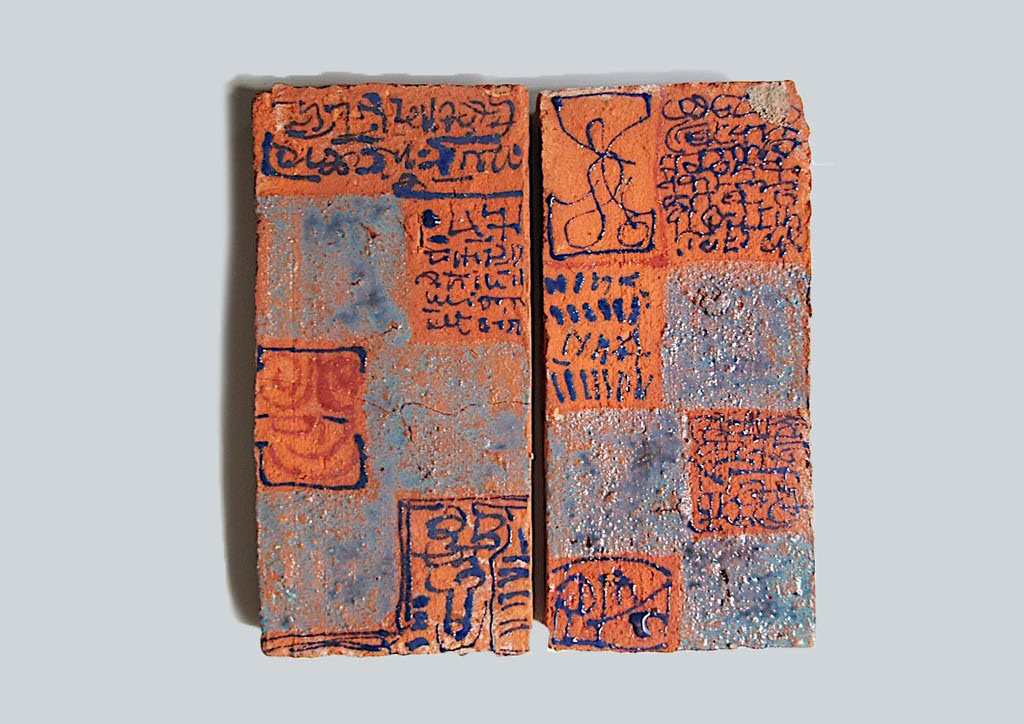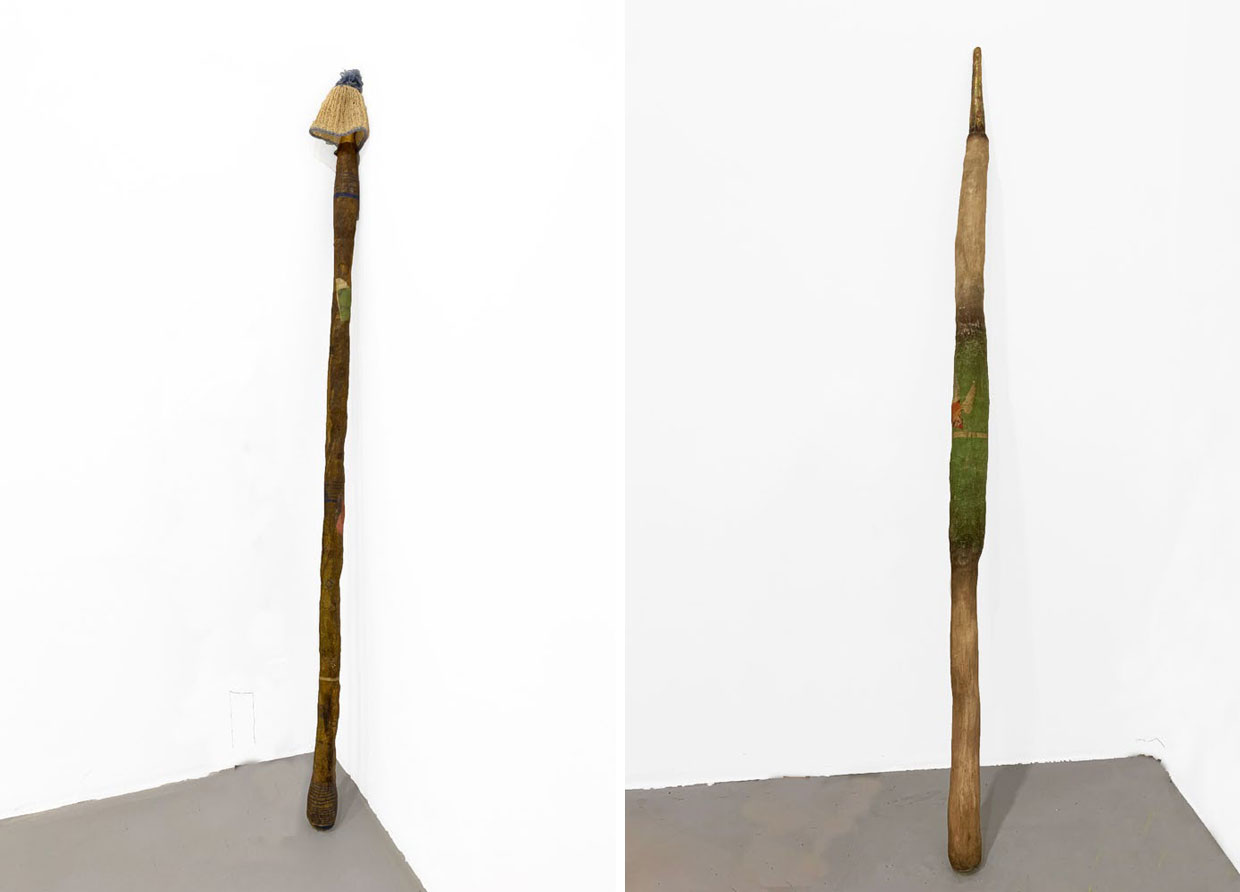ART CITIES:Paris-Michele Ciacciofera
 Michele Ciacciofera works with a wide variety of media and in a circular manner, moving from drawing to sculpture via painting and sound experiments. After studying sociology and anthropology at the Institue of Political Science in Palermo, he began working in collaboration with artist and architect Giovanni Antonio Sulas. His work then developed around several series, from the Silence! series, in which he explored violence as the nature of media images linked to terrorism, to another devoted to the desert or to Antonio Gramsci.
Michele Ciacciofera works with a wide variety of media and in a circular manner, moving from drawing to sculpture via painting and sound experiments. After studying sociology and anthropology at the Institue of Political Science in Palermo, he began working in collaboration with artist and architect Giovanni Antonio Sulas. His work then developed around several series, from the Silence! series, in which he explored violence as the nature of media images linked to terrorism, to another devoted to the desert or to Antonio Gramsci.
By Dimitris Lempesis
Photo: Michel Rein Gallery Archive
The exhibition “The Library of Encoded Time” Time is the third part of a trilogy devised by Michele Ciaccofera, which questions the relation of signs to matter and memory. The first part was “The Translucent Skin of the Present”, was presented at the Vitamin Gallery in Guangzhou in 2018, and was followed by “A Chimerical Museum of Shifting Shapes” at the Voice Gallery in Marrakesh. “The Library of Encoded Time” is structured around the concept of “duration”, as defined by philosopher Henri Bergson in his 1907 work “Creative Evolution”. The focus on duration characterizes the artist’s creative process and is reflected by his use of techniques that reproduce the natural process of stratification. Created by layering coats of clay, gauze, painting, shellac and wax, these artworks bear the marks that duration prints on their surface. As both a key aspect of the creative process and as a theoretical framework, stratification allows us to understand the ongoing process of construction of human history, memory and identity, thus representing an act of resistance against the obliteration of humankind’s most precious heritage: our words and our actions. The works created for this show, planned as a whole, in which each piece resonates with the next, are the result of a twofold line of thinking about both the erosion and saturation of memory, as well as its creative rekindling. Sculptures placed on the floor and on shelves, mural grids, rods leaning against a wall, works on canvas and paper, all appear like fantasized archaeological objects, installed as if in a real excavation site, “edified” using local elements, like bricks and grids. As in his similar earlier installations in Marrakesh and Guangzhou, Ciacciofera uses kinds of shelves covered with signs, inspired by cuneiform tablets and undeciphered ancient alphabets, local bricks, and “earth” clay from France. In a process designed to rekindle their memory, he carries out an initial firing which “cleanses” the object’s past, and carries on with the task of the craftsman preceding him with forms of writing, made with needles from the pharmaceutical industry, pigments and water, prior to a second firing. Set on the floor, these bricks forming the library called “The Library of Encoded Time” follow a specific order, as in an archaeological site, tracing a sort of grid with solids and voids, in a rhythm which also suggests a “loss”. The mural grids enclosed by threads, titled “Janas Code” (conjuring up those Neolithic tombs called domus de Janas which are to be found in Sardinia), where objects and sculptures are hung, duplicate this rhythm of solid and hollow, echoing the bricks. They are made with grids from local building sites, used for construction, which Ciacciofera cuts up and processes, for which they trace and also make specific supports, in order to keep them away from the wall like pictures. Decorated with threads, some of which drop down after a deliberate cut, these new “edifices” thus reveal a certain fragility. The sculptures made of resin and ceramic, sometimes in the form of trilobites, and the real fossils and collected objects suspended by threads from the grids—based on a practice obsessing the artist since his youth, when he collected ancient ceramics as well as manuscripts and furniture—connect these works to the quest for universals which informs the artist’s work, beyond the western world. This Neolithic head coming from Central Europe, and this Inca head link these grids to a history ranging from the Mediterranean to South America, by way of Africa. The painted clay rods, incised with signs, and covered with pigments and layers of gauze and fabric, the ceramic heads placed on shelves, and the figurative works on canvas and paper are all connected to a remote past, when the emergence of both signs and figures was imbued with shamanistic rituals, whose mysterious nature today all the more permits re-invention by the work. In this show, Michele Ciacciofera is interested in signs, in particular symbolic ones, and their emergence from the Neolithic period on, some 40,000/30,000 years BCE, as well as ancient languages, some of which are still undecipherable today. These signs which have lost their meaning appear, for him, like holes in the memory, witnesses of a past that we think we control because it has been museified, sometimes in an excessive way.
Info: Michel Rein Gallery, 42 rue de Turenne, Paris, Duration: 9/2-6/4/19, Days & Hours: Tue-Sat 11:00-19:00, http://michelrein.com









